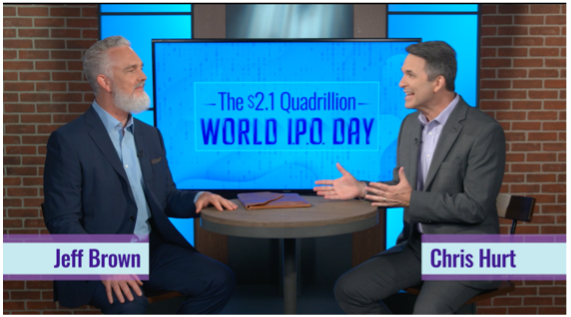Building wealth underpins the American dream. Whether it’s paying for a kid’s education, securing a comfortable retirement, or attaining life-changing financial independence, what you invest in plays a huge role in your success. It’s not just about picking winning stocks, or stocks vs. bonds, either. It’s truly making appropriate investment decisions based on your goals. Or more specifically, when you will be relying on the proceeds from your investments.
Let’s take a closer look at some of the most popular investment vehicles. They may not all be appropriate for you today, but over time, the best investments for your needs can change. Let’s dig in.
- Stocks
- Bonds
- Tax-advantaged accounts, such as retirement accounts
- Real Estate
Almost everyone should own stocks. That’s because stocks have consistently proven the best way for the average person to build wealth over the long term. U.S. stocks have delivered better returns than bonds, savings yields, and gold over the past four decades. Stocks have outperformed most investment classes over almost every 10-year period in the past century.
Why have U.S. stocks proven such great investments? Because as a stockholder, you own a business; as that business gets bigger and more profitable, and as the global economy grows, you own a business that becomes more valuable. In many cases, shareholders can also own a dividend.
We can use the past dozen years as an example. Even across two of the most brutal recessions in history, the SPDR S&P 500 ETF(NYSEMKT:SPY), an excellent proxy for the stock market as a whole, has delivered better returns than gold or bonds:
This is why stocks should make up the foundation for most people’s portfolios. What varies from one person to the next is how much stock makes sense.
For example, someone in their 30s saving for retirement can ride out many decades of market volatility and should own almost entirely stocks. Someone in their 70s should own some stocks for growth; the average 70-something American will live into their 80s, but they should protect assets they’ll need in the next five years by investing bonds and holding cash.
There are two main risks with stocks:
- Volatility: Stock prices can swing broadly over very short periods. This creates risk if you need to sell your stocks in a short period of time.
- Permanent losses: Stockholders are business owners, and sometimes businesses fail. If a company goes bankrupt, bond owners, contractors, vendors, and suppliers stand to get repaid first. Stockholders get whatever — if anything — is left.
You can limit your risk to the two things above by understanding what your financial goals are.
Managing volatility
If you have a kid heading off to college in a year or two, or if you’re retiring in a few years, your goal should no longer be maximizing growth — instead, it should be protecting your capital. It’s time to shift the money you’ll need in the next several years out of stocks, and into bonds and cash.
If your goals are still years and years in the future, you can hedge against volatility by doing nothing. Even through two of the worst market crashes in history, stocks delivered incredible returns for investors who bought and held.
Avoiding permanent losses
The best way to avoid permanent losses is to own a diversified portfolio, without too much of your wealth concentrated in any one company, industry, or end market. This diversification will help limit your losses to a few bad stock picks, while your best winners will more than make up for their losses.
Think about it this way: If you invest the same amount in 20 stocks and one goes bankrupt, the most you can lose is 5% of your capital. Now let’s say one of those stocks goes up 2,000% in value, it makes up for not just that one loser, but would double the value of your entire portfolio. Diversification can protect you from permanent losses and give you exposure to more wealth-building stocks.
Why you should invest in bonds
Over the long term, growing wealth is the most important step. But once you’ve built that wealth and get closer to your financial goal, bonds,which are loans to a company or government, can help you keep it.
There are three main kinds of bonds:
- Corporate bonds, issued by companies.
- Municipal bonds, issued by state and local governments.
- Treasury notes, bonds, and bills, issued by the U.S. government.
Here is a recent example of how bonds can be useful investments, using the Vanguard Total Bond Market ETF (NYSEMKT:BND), which owns short- and long-term bonds, and the iShares 1-3 Year Treasury Bond ETF(NASDAQ:SHY), which owns the most stable treasury bonds, compared to the SPDR S&P 500 ETF Trust:
As the chart shows, while stocks were crashing hard and fast, bonds held up much better, because a bond’s worth — the face value, plus interest promised — is easy to calculate, thus far less volatile.
As you get closer to your financial goals, owning bonds that match up with your timeline will protect assets you’ll be counting on in the short term.
Why and how to invest in real estate
Real estate investing might seem out of reach for most people. And if you mean buying an entire commercial property, that’s true. However, there are ways for people at almost every financial level to invest in and make money from real estate.
Moreover, just like owning great companies, owning high-quality, productive real estate can be a wonderful way to build wealth, and in most recessionary periods throughout history, commercial real estate is counter-cyclical to recessions. It’s often viewed as a safer, more stable investment than stocks.
Publicly traded REITs, or real estate investment trusts, are the most accessible way to invest in real estate. REITs trade on stock market exchanges just like other public companies. Here are some examples:
- American Tower (NYSE:AMT) owns and manages communications sites, primarily cell phone towers.
- Public Storage (NYSE:PSA) owns almost 3,000 self-storage properties in the U.S. and Europe.
- AvalonBay Communities (NYSE:AVB) is one of the largest apartment and multifamily residential property owners in the U.S.
REITs are excellent investments for income, since they don’t pay corporate taxes, as long as they pay out at least 90% of net income in dividends.
It’s actually easier to invest in commercial real estate development projects now than ever. In recent years, legislation made it legal for real estate developers to crowdfund capital for real estate projects. As a result, billions of dollars of capital has been raised from individual investors looking to participate in real estate development.
It takes more capital to invest in crowdfunded real estate, and unlike public REITs where you can easily buy or sell shares, once you make your investment you may not be able to touch your capital until the project is completed. Moreover, there’s risk that the developer doesn’t execute, and you can lose money. But the potential returns and income from real estate are compelling, and have been inaccessible to most people until recently. Crowdfunding is changing that.






